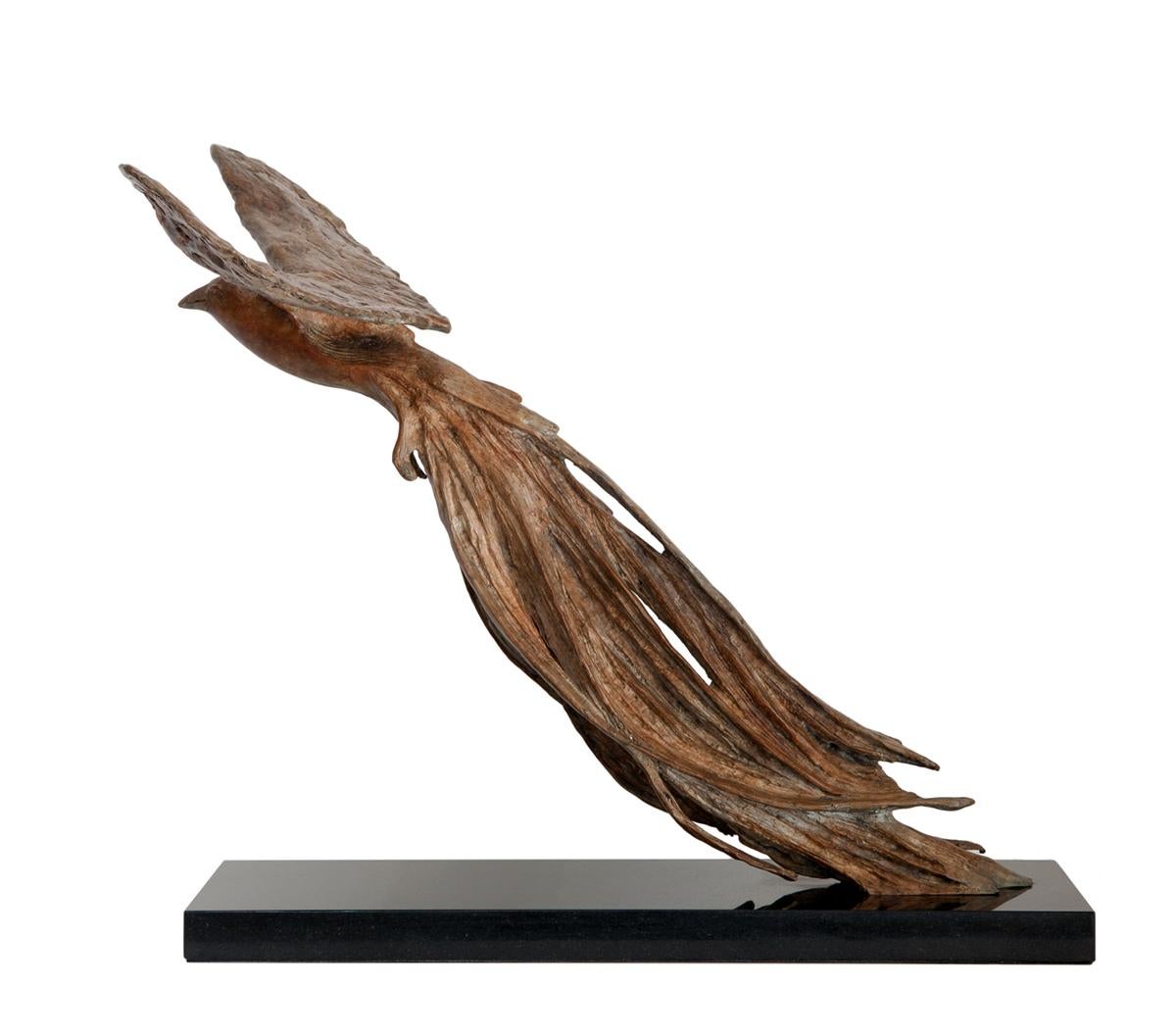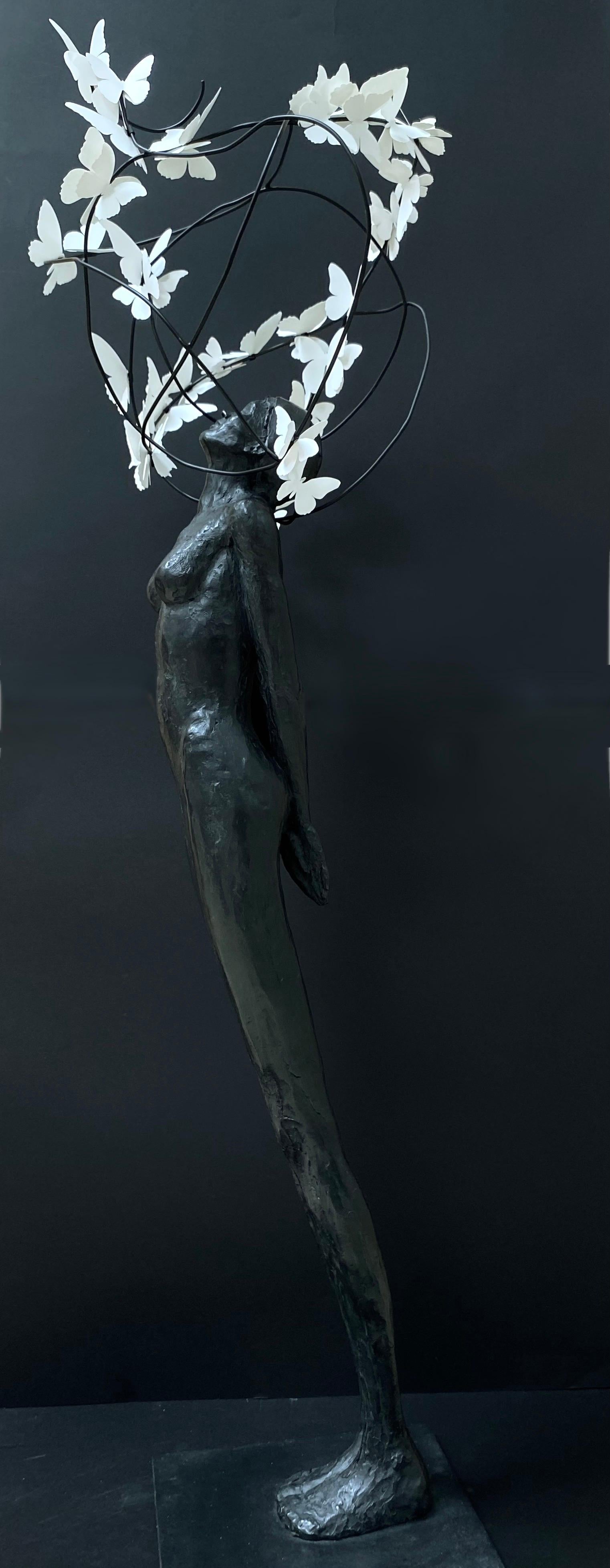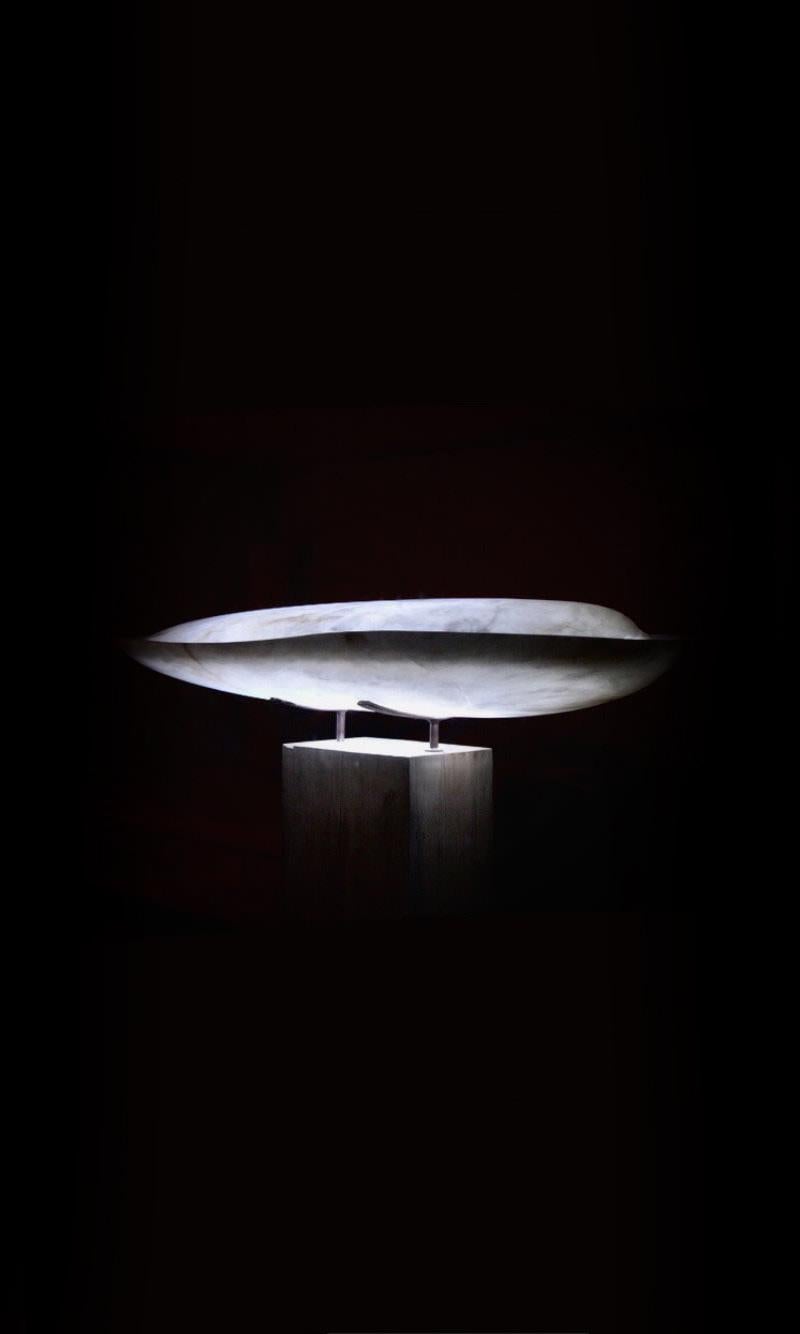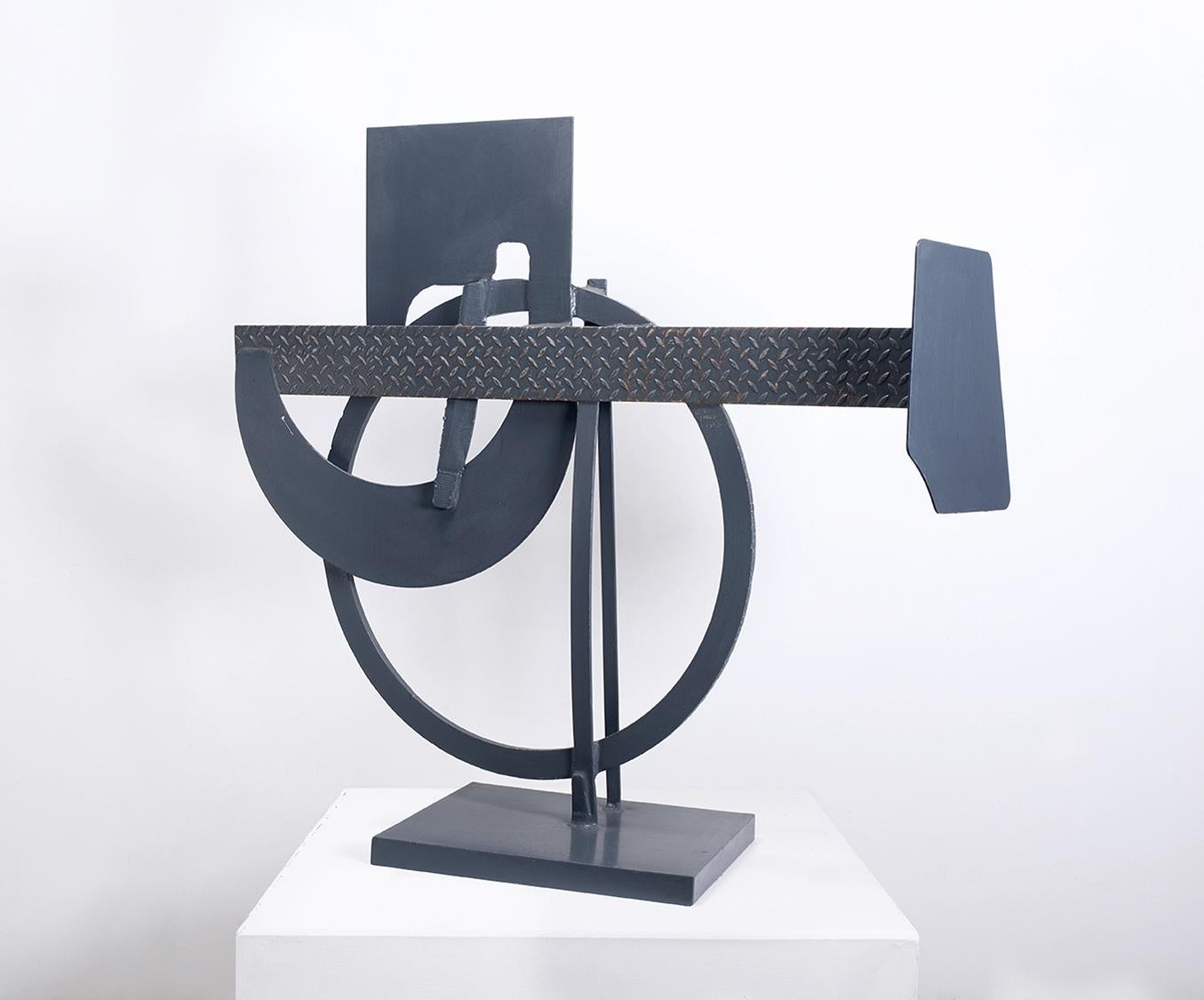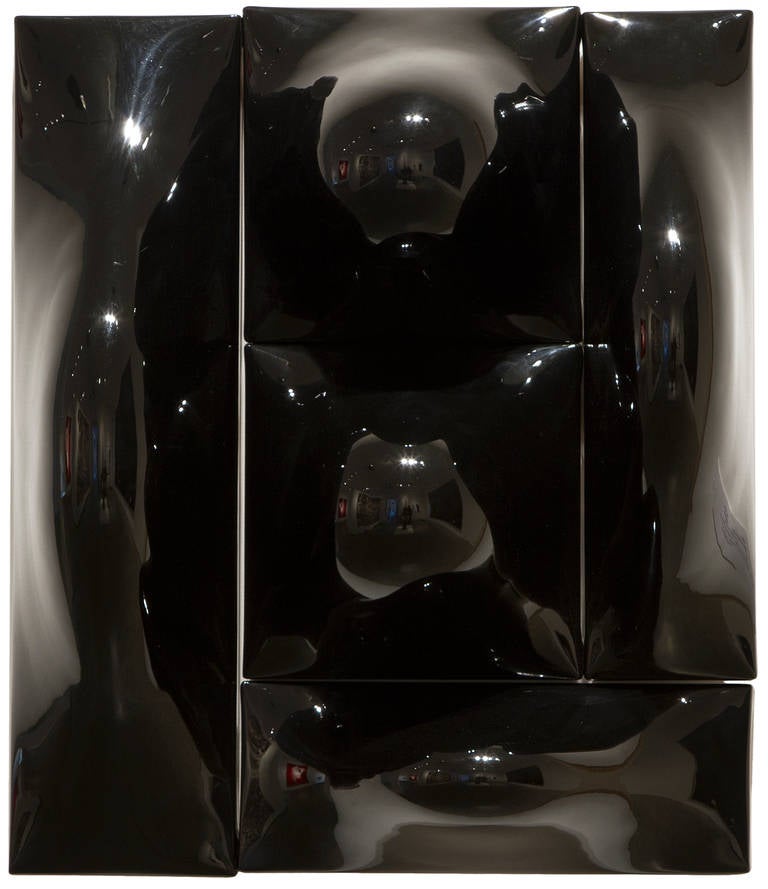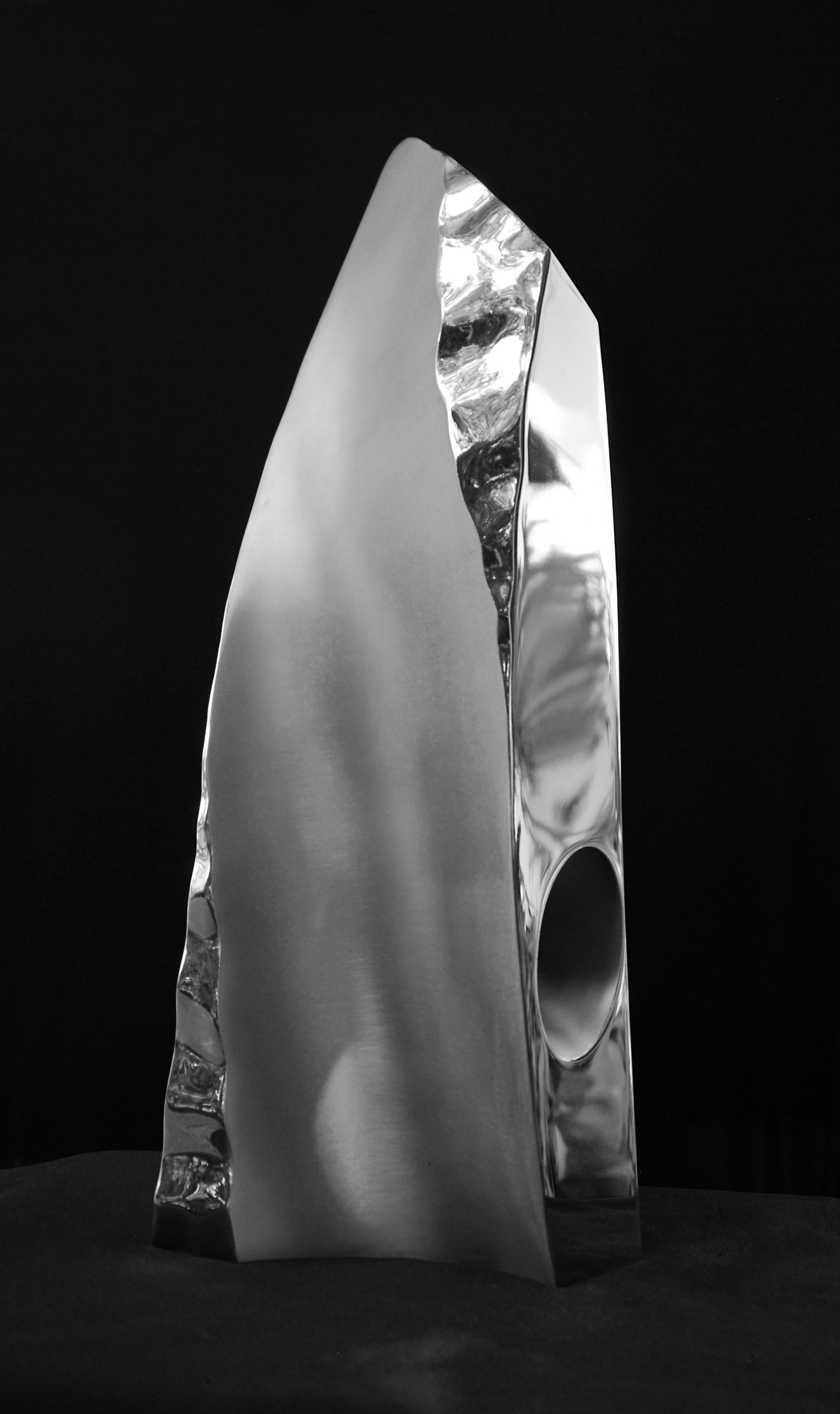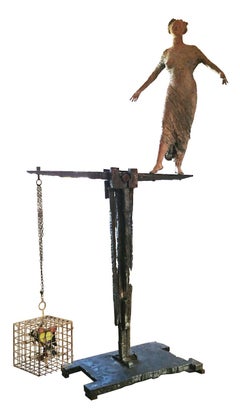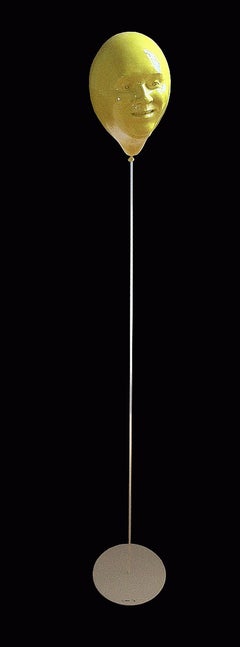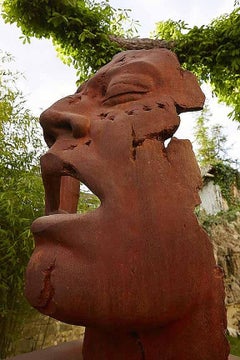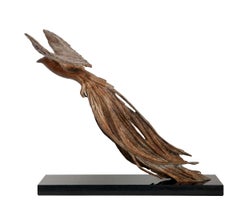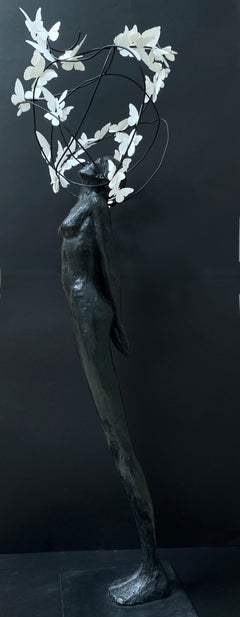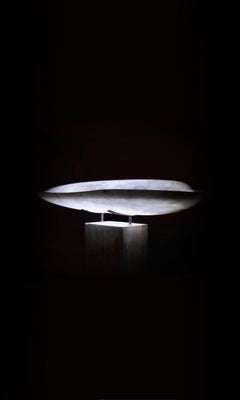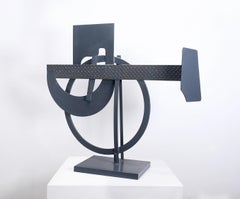Want more images or videos?
Request additional images or videos from the seller
1 of 2
Mauro CordaThe Ray
$39,000
£29,724.29
€33,976.77
CA$54,870.54
A$60,108.97
CHF 31,639.02
MX$717,416.39
NOK 403,317.49
SEK 368,692.97
DKK 253,800.38
About the Item
Mauro Corda’s figurative sculptures maintain a reverence for classical and modernist traditions, while also expressing the artist’s voice. Though born in France, the artist hails from a family of Italian stonecutters and received his education at the École des Beaux-Arts in Paris. Working in metals such as bronze, aluminum, and stainless steel, Corda adheres to a mostly classical notion of the figure, yet he deviates from historical tradition by placing his figures in unusual poses or by adding unexpected elements. His sculpture The Reliquary, for example, includes a syringe embedded into a gilt-bronze arm. This element adds an enigmatic and poetic quality to the work, and identifies the sculpture as a contemporary object despite its traditional form and material.
- Creator:Mauro Corda (1960, French)
- Dimensions:Height: 39.37 in (100 cm)Width: 31.5 in (80.01 cm)Depth: 21.26 in (54.01 cm)
- Medium:
- Movement & Style:
- Period:
- Condition:
- Gallery Location:Atlanta, GA
- Reference Number:1stDibs: LU155528551302
About the Seller
5.0
Vetted Professional Seller
Every seller passes strict standards for authenticity and reliability
Established in 2008
1stDibs seller since 2021
19 sales on 1stDibs
- ShippingRetrieving quote...Shipping from: Atlanta, GA
- Return Policy
More From This Seller
View AllQue la fête commence
By Mauro Corda
Located in Atlanta, GA
Mauro Corda’s figurative sculptures maintain a reverence for classical and modernist traditions, while also expressing the artist’s voice. Though born in France, the artist hails fro...
Category
21st Century and Contemporary Modern Figurative Sculptures
Materials
Iron
Bilancia
By Hugo Rivas
Located in Atlanta, GA
“Making sculpture is a very complex matter. A word added to a form, ultimately helping to better define it. And ultimately helping to understand the whole.”
Ugo Riva...
Category
21st Century and Contemporary Modern Figurative Sculptures
Materials
Bronze, Iron
$70,200
Ballon
By Mauro Corda
Located in Atlanta, GA
Mauro Corda’s figurative sculptures maintain a reverence for classical and modernist traditions, while also expressing the artist’s voice. Though born in France, the artist hails fro...
Category
21st Century and Contemporary Modern Figurative Sculptures
Materials
Iron
$4,680
Vestige
By Mauro Corda
Located in Atlanta, GA
Mauro Corda’s figurative sculptures maintain a reverence for classical and modernist traditions, while also expressing the artist’s voice. Though born in France, the artist hails fro...
Category
21st Century and Contemporary Modern Figurative Sculptures
Materials
Iron
$132,600
Check with L, 2006
Located in Atlanta, GA
For sculptor/ painter/ photographer Roberto Santo, art became a way of life when, at age16, he embarked upon an apprenticeship with Bob Peak, the celebra...
Category
21st Century and Contemporary Modern Figurative Sculptures
Materials
Bronze
Piccola Kore
By Wladimiro POLITANO
Located in Atlanta, GA
Wladimiro Politano (February 19, 1940 Lago (Cosenza), Italy) is an Italian sculptor, painter and drawer.
Politano's work has been exhibited in the ...
Category
21st Century and Contemporary Modern Figurative Sculptures
Materials
Metal
You May Also Like
Sakabula
Located in Somerset West, WC
Sakabula, the Black Widow Bird is a limited edition bronze sculpture.
Created with the lost wax casting process.
Category
21st Century and Contemporary Figurative Sculptures
Materials
Bronze
Flyaway
By Laurence Perratzi
Located in New York, NY
Laurence Perratzi is a French figurative artist exploring the body’s expression. Her work is a reflection on movement, strongly influenced by her athletic background where poise and ...
Category
2010s Contemporary Figurative Sculptures
Materials
Bronze
Transient
Located in Miami Beach, FL
Gabriel Sobin was born in 1971 in Salon de Provence, France, to an English mother and an American father. Sobin studied at l’École d’Arts Appliqués Oli ...
Category
2010s Abstract Abstract Sculptures
Materials
Alabaster
$32,000
Traccia
By Alex Corno
Located in Dallas, TX
In his abstract constructions, Alex Corno does not make art to repeat what is visible, to paraphrase Klee’s affirmation. He uses the formal language of materials and space: opposing thin arcs, rods, and loops with weighty rectilinear forms to achieve a dynamic balance. Corno welds his iron and stainless steel sculptures in a diverse range of scales, from small interior works to monumental garden...
Category
2010s Abstract Abstract Sculptures
Materials
Iron
Price Upon Request
Elutheria
By Ron Reihel
Located in Palm Desert, CA
A sculpture by Ron Reihel. "Elutheria" is an abstract, cast resin, plaster, wood and canvas wall sculpture executed in a deep, glossy black by contemporary artist Ron Reihel. Ron Rei...
Category
1990s Contemporary Abstract Sculptures
Materials
Canvas, Plaster, Resin, Wood
$18,000
Soul
By Santiago Medina
Located in Fort Lauderdale, FL
Santiago Medina (b. 1964)
Soul, 2023
Italian Stainless Steel Sculpture
Category
2010s Contemporary Sculptures
Materials
Stainless Steel
Price Upon Request
